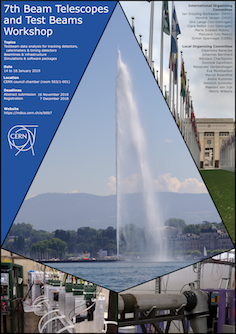Speaker
Description
The ATLAS detector at CERN will undergo several updates for the High Luminosity phase of LHC in 2023. A completely new silicon tracker (ITk) will be installed.
Pixel modules built with the RD53A chip and planar sensors were studied using the EUDET telescope for reference tracks. Sensor thicknesses of 100 and 150 microns were investigated. Pixel sizes of 50 microns x 50 microns and 25 microns by 100 microns were compared at various incidence angles. The measurements of interest for this run were: absolute charge measurement calibration from calculated MIP peak, vs. depletion voltage, position resolution (residuals) attained with the different sensors, and absolute timing dispersion of pixels in the RD53A chip. The last measurement is unique to this facility, and relies on the delivery of a large number of particles (few 100) in a single shot which cross the sensor at the same time with ps accuracy.
The SLAC beamline in the end station A facility (ESTB) is equipped with a telescope of the EUDET type (codename: Caladium) that was produced by DESY for the RD50 collaboration. This presentation will discuss the experimental setup as well as the beam parameters and operating conditions at SLAC. Some preliminary results will also be shown.
